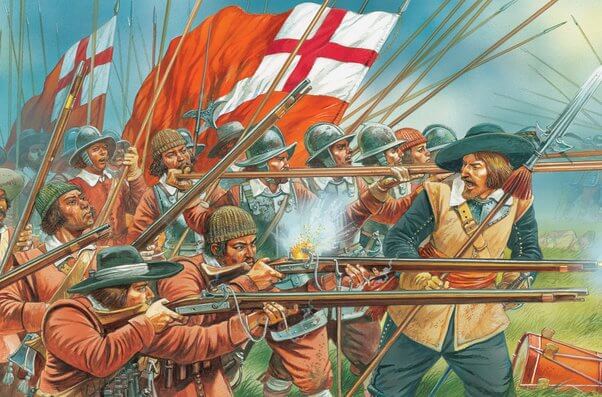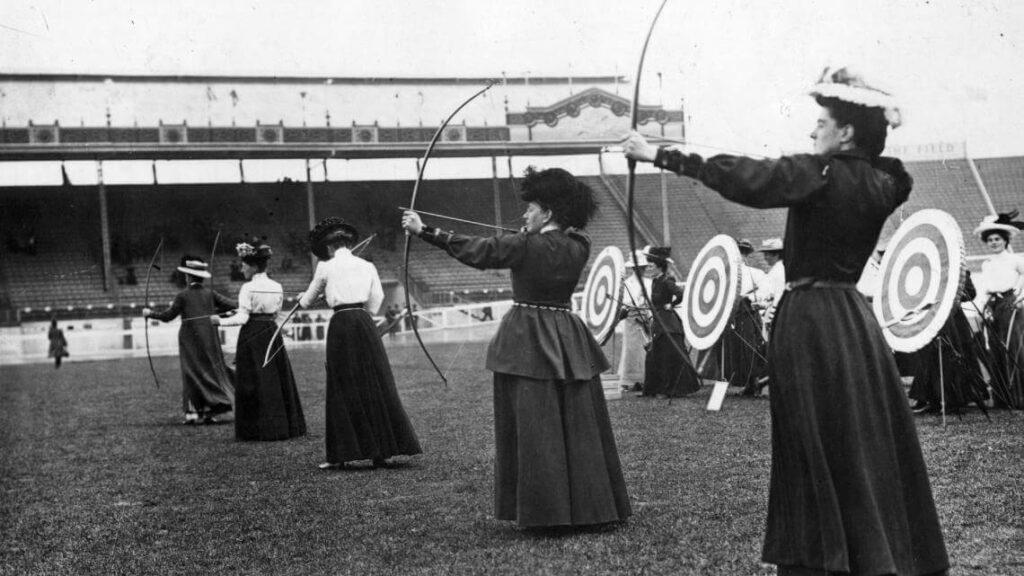From the dawn of civilization, human beings have sought ways to defend themselves in times of conflict. Throughout history, weapons have evolved and improved, but few have had the impact that the English Longbow has had on European warfare.
Unleashing a profound revolution on the medieval battlefield, the English Longbow has carved out a remarkable legacy in military history and modern cultural significance.
From the hands of skilled Welsh craftsmen to the legendary English archers, the longbow’s story is an intriguing blend of technology, strategy, and societal change.
In this article, we will explore the captivating journey of the English Longbow, delving into its historical significance and understanding how its revolutionary impact continues to foster its popularity in today’s world.
The English Longbow: A Brief History of England’s Greatest Weapon
The English longbow, a powerful medieval weapon that emerged prominently during the Middle Ages, left an indelible mark on military history.
Craftsmen primarily used yew wood to create this type of longbow, which gained renown for its impressive range, accuracy, and lethal striking power. Though its design was simple, its execution was sophisticated, with a length of about 6 feet. It required extensive training and considerable physical strength for effective operation.
Known for its high rate of fire, an experienced archer could release up to 12 arrows per minute, reaching targets at a distance of approximately 250 yards, making it a formidable weapon on the battlefield.
The longbow’s most consequential impact was in altering the dynamics of medieval warfare, particularly during the Hundred Years’ War between England and France in the 14th and 15th centuries.

The Battle of Crécy (1346) and the Battle of Agincourt (1415) highlighted the decisive role of the English longbow, where outnumbered English forces decimated superior French armies, primarily due to the longbow’s devastating effect.
The English longbow effectively shifted the military emphasis from heavy cavalry to infantry, democratizing the battlefield and challenging the dominance of the heavily armoured knights.
In essence, the English longbow reshaped strategies in warfare and signalled a new era of battle tactics.
The Importance of the Longbow in English History
The Longbow played a crucial role in many major battles throughout English history. English archers most famously used them to wreak devastation at the Battle of Agincourt in 1415, a pivotal conflict during the Hundred Years’ War with France. But their importance extends further back into history.
People credit the Welsh with developing the initial version of what later became the English longbow around 1180 CE. They used yew trees from Welsh hillsides to craft these powerful weapons for hunting and defence.
As England went into battle against France in 1337 during what would become known as The Hundred Years War, Edward III ordered an emphasis on recruiting archers rather than knights.
This was due to their effectiveness in previous battles such as Crecy where they successfully defeated French cavalry charges using their powerful clay-tipped arrows that could penetrate armour.
It’s clear that the English longbow played a significant role in shaping English history. Its impact on warfare cannot be understated, and its story is one that deserves to be remembered and celebrated.
Origins of the Longbow
Bows have been used in warfare since ancient times, with evidence of their use dating back to at least 10,000 BCE. The earliest bows were short and made of wood, bone or horn.
Over time, they evolved into more complex designs with longer range and greater accuracy. In medieval Europe, archers were an essential component of any army.
Development of the Longbow in Wales and England
Even though the longbow is frequently linked with England, its roots actually trace back to Wales. Centuries before the longbow’s development, the Welsh had been employing a type of bow called the “short bow”.
The longbow was first mentioned in English records around 1298 CE and quickly became a popular weapon among English archers. The early longbows were made from yew wood, which was known for its strength and flexibility.
The bow itself measured between 6 and 7 feet in length and could shoot arrows up to 250 yards away. It took years of practice to be able to use the weapon effectively – hence why it became such a valuable asset on the battlefield.
Even though bows have served in warfare for thousands of years, the battlefield game truly changed only with the development of the longbow
The yew wood design allowed them to shoot arrows further and with greater accuracy than ever before – something that would prove invaluable during some very important battles throughout history.
Training and Skill Required To Use A Longbow Effectively
Using a longbow required extensive training and practice. Archers had to be physically strong enough to pull back the bowstring with enough force to shoot accurately while maintaining their stamina throughout the day-long battles.
Training began at a young age; boys as young as seven were often sent away from home to become skilled archers. Archers also had specific techniques that they used when firing their arrows.
Two techniques that every modern archer will recognise include:
Bracing – this involved bending one’s knees while drawing back on the bowstring for added stability. This occurred because the weight of the bow demanded the involvement of every muscle in the body during the draw..
Anchoring – the longbow archer would draw back the bowstring until the fingers touched their chin or earlobe before releasing.
In longbow archery, archers only hold the anchor point for a split second because of the considerable force needed to reach it. The moment the archer touches the anchor point, they release the arrow.
Using a longbow effectively required physical strength combined with mental focus and discipline; archers needed both sharp eyesight and good coordination skills.
However challenging it might have been though – the longbow’s effectiveness in battle proved its worth, and it remains a prominent weapon in English history to this day.
Decline of the Longbow
The Rise Of Gunpowder
As the medieval period drew to a close, Europe saw the emergence of weapons powered by gunpowder.
While initially unreliable and inaccurate, these weapons eventually improved and posed a significant threat to the dominance of archery on the battlefield.

The use of muskets, for example, allowed soldiers to fire at distant targets without needing extensive training or physical strength as required by longbows.
The firearm revolutionized warfare and made it difficult for longbowmen to compete.
Changes in Warfare Tactics
In addition to gunpowder weapons, changes in warfare tactics contributed to the decline in the use of longbows. The growth of heavily armoured knights had previously been countered with arrows that could penetrate armour at close range.
However, with advances in armour technology that made it more resistant to arrows, archers became less effective against knights.
In response, armies began using pikes and other polearms that were better suited for fighting against armoured opponents. Another contributing factor was the increasing popularity of artillery such as cannons.
These weapons could quickly devastate entire areas on a battlefield with their explosive power and range. While still used sporadically in later centuries, by the end of medieval times archery had lost its dominance on European battlefields due in large part to these technological advancements and changes in tactics.
Revival of Interest in the Longbow
Victorian Era Revival
After the longbow lost its military significance, it fell into obscurity. However, during the Victorian era, there was a newfound interest in archery for sport and recreation. This led to a revival of interest in the longbow as an important part of English history and culture.
The Victorians, fascinated by medieval times, viewed the longbow as a symbol of the chivalry and heroism that defined that era.

The Victorian revival spawned organizations such as the Toxophilite Society, which aimed to promote archery practice with traditional English longbows.
The Society became popular among the nobility, with members including King Edward VII himself. Tournaments were held regularly, where participants competed for prizes such as silver arrows and gold medals.
Modern-Day Enthusiasts and Competitions
In recent years, there has been another resurgence of interest in traditional archery equipment, particularly the English longbow. Modern-day enthusiasts have formed societies and clubs dedicated to preserving this important aspect of English history.
These groups organize events where archers can meet up to share their knowledge about traditional techniques and participate in competitions.
Archery competitions featuring traditional equipment are becoming more popular around the world. Events such as The Longbow World Championships attract participants from all over who come together to compete for accolades or simply for fun.
Believing in medieval methods, many enthusiasts today strive to craft and use only authentic equipment. They undertake this effort to preserve ancient skills that could otherwise fade into oblivion over time.
The growing popularity of this pastime suggests that while technology may advance quickly with each passing year, people still want time-honoured traditions like those associated with archery’s most famous tool – The English Longbow – which has survived centuries!
Myths and Legends Surrounding the Longbow
Robin Hood and his famous bow
When you think of a longbow, there’s a good chance that Robin Hood comes to mind. The legendary outlaw is often depicted with his trusty longbow in hand, ready to fight for justice.
According to legend, Robin Hood was such an expert with the longbow that he could shoot an arrow through an oak tree. While there is no historical evidence that Robin Hood was a real person, his legend has endured for centuries.
The stories of his exploits have been retold in countless books, movies, and TV shows. And through it all, the image of Robin Hood with his bow has remained one of the most enduring symbols of English folklore.
Other stories and legends associated with the longbow
Robin Hood isn’t the only figure from English mythology associated with the longbow. In fact, there are many other stories and legends that feature this iconic weapon. One such story comes from the Battle of Agincourt in 1415.
As per legend, King Henry V, facing a French force outnumbering his army, delivered a rousing speech to embolden his men to fight bravely.
As part of this speech, he reportedly said: “We few, we happy few, we band of brothers; for he today that sheds his blood with me shall be my brother.” This quote has become famous over time and is still remembered today.
Another legend involves an archer named Wat Tyler who led a peasant revolt in 1381. Tyler was said to have been an expert marksman who could hit targets from incredible distances using his trusty longbow.
The myths and legends surrounding the English longbow are part of what makes it such a fascinating weapon. Its history is filled with heroic tales of bravery and skill that continue to capture our imaginations to this day.
Read More: Famous Longbow Archers Throughout History
Conclusion
The English longbow played a significant role in the history of England, particularly during the medieval period. It was a powerful weapon that could penetrate armour and inflict serious damage on an opponent.
It was seen as a symbol of national pride and identity, representing their skill, strength, and courage. The longbow became deeply ingrained in English folklore and legend, with stories of legendary archers like Robin Hood becoming part of popular culture.
The English longbow, while no longer a weapon in battle, continues to be a crucial part of England’s cultural heritage. Its undeniable historical impact shaped England’s military supremacy during the medieval period and it continues to inspire people worldwide today.

0 Comments